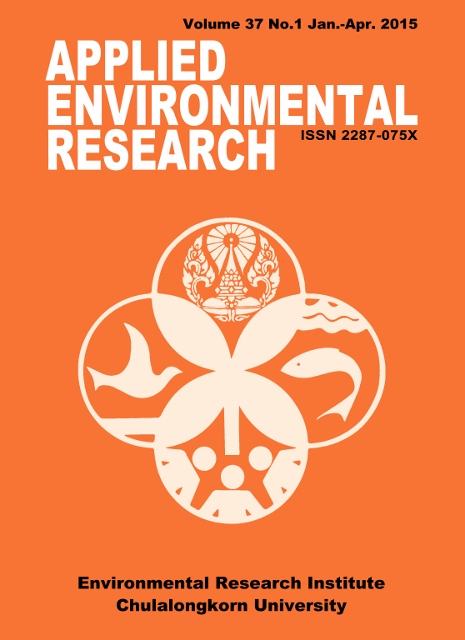Fractionation and Mobility of Lead in Klity Creek Riverbank Sediments, Kanchanaburi, Thailand
Main Article Content
Abstract
The sequential extraction method was employed to investigate the distribution and chemical fractions of lead (Pb) in Klity Creek sediments, Kanchanaburi, Thailand with the main objective to define the lead mobility in sediment and potential bioavailability in relation to sediment contamination levels. Samples were collected from a total of twelve sampling sites distributed from upstream of the polluted zone until the final downstream point at Srinakarin Reservoir. The results showed that the background value of total lead concentration in the sediments from this area was higher than those reported from other locations in Thailand. Sequential extraction results revealed that lead was mainly associated with the reducible fraction especially in the polluted zone in the vicinity of the ore dressing plant. This is different from the distribution of lead fractions upstream and downstream of the polluted area, i.e. reducible fraction was the major component upstream whereas strongly dissociated fractions (oxidizable and residual) were the major components for the downstream samples (at Srinakarin Reservoir). A significant amount of the lead fraction in the study area was rather mobile, suggesting it as readily available to living organisms. Most samples exhibited a medium risk level with Risk Assessment Code (RAC) values of more than 10%.
Article Details

This work is licensed under a Creative Commons Attribution-NonCommercial 4.0 International License.
Published articles are under the copyright of the Applied Environmental Research effective when the article is accepted for publication thus granting Applied Environmental Research all rights for the work so that both parties may be protected from the consequences of unauthorized use. Partially or totally publication of an article elsewhere is possible only after the consent from the editors.

